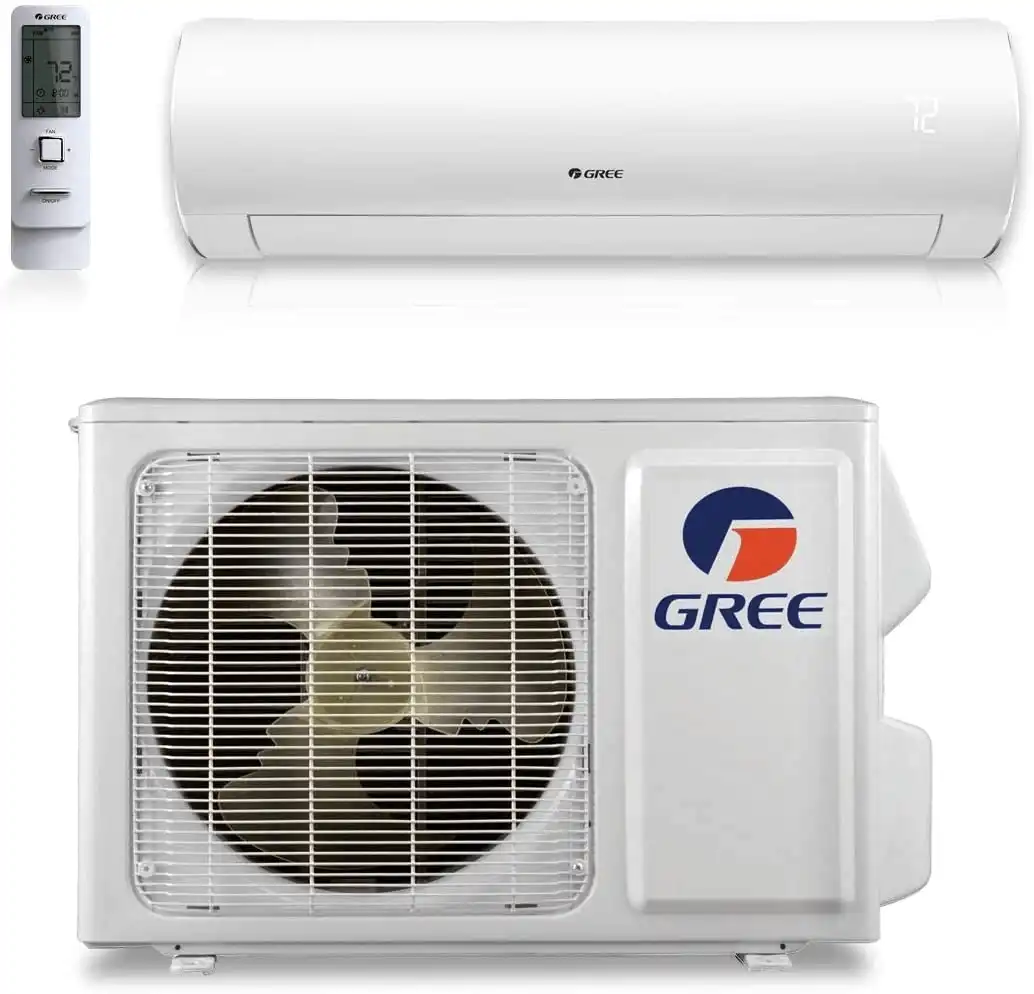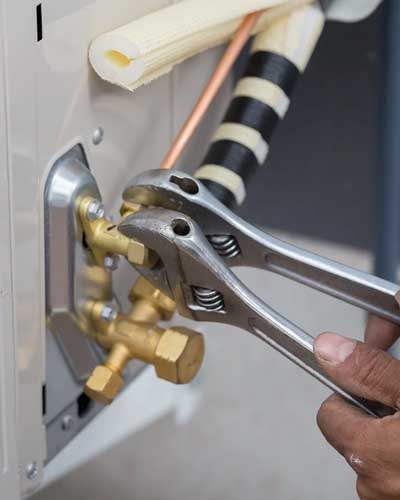
Do Mini Splits Need Permits?
For HVAC contractors and informed homeowners, understanding mini-split permit requirements is critical for code-compliant, reliable installations. These highly efficient, ductless HVAC systems are becoming a popular choice for their energy-saving benefits and ease of installation. However, skipping permits can lead to code violations, fines, or voided GREE manufacturer warranties, which require professional, permitted installation. For HVAC professionals and homeowners alike, navigating local regulations ensures a safe, compliant, and hassle-free installation. In this article, we'll break down when permits are needed, why they matter, and how to handle the process efficiently. Let's make sure your next mini split project is done right.
When Mini Split Installations Need Permits
In the US, most jurisdictions require permits for permanent HVAC installations under IMC Section 106.1 and NEC Article 440. These permits are guided by local codes designed to ensure safety and safeguard your investment. Let's dive into how these local codes influence the permitting process.
Permit Requirements Vary by Location
Permit requirements are not uniform and depend on your specific municipality, county, or state. To avoid complications, it's essential to contact your local building department to understand the permits you'll need and any associated fees.
What Triggers Permit Requirements
In most cases, electrical work is the primary factor that necessitates a permit. This includes tasks like installing new wiring, adding dedicated 208/230V circuits, or hardwiring outdoor units for the mini split system. These permits are crucial to prevent risks such as wiring mistakes, equipment malfunctions, or potential fire hazards.
Why Mini Split Permits Are Required
Getting the right permits isn't just a bureaucratic step - it's an essential part of protecting your investment, ensuring safety, and sidestepping potential headaches. Permits play a dual role in safeguarding both contractors and homeowners. Let's delve into how they enforce building codes, shield you from legal troubles, and even add value to your property.
Meeting Building Code Requirements
Permits ensure that your GREE mini-split installation complies with local mechanical, electrical, and energy codes, all of which GREE systems are engineered to meet. These codes are carefully designed to protect both the occupants and the property. They cover critical aspects such as proper electrical connections, refrigerant line installation, drainage systems, and the structural requirements for securely mounting outdoor units.
By following the permitting process, you gain professional oversight that reduces risks like equipment malfunctions, electrical hazards, or structural issues. Inspections verify that every component - from electrical wiring to refrigerant lines - is installed correctly for optimal performance and safety.
Building codes also address factors like ventilation, fire safety, and required clearances, which are key to ensuring reliable operation. These standards are based on years of industry knowledge and are regularly updated to reflect advancements in safety practices and technology.
Avoiding Legal and Financial Problems
Skipping permits can lead to a host of issues, including legal troubles, fines, and expensive corrective work. Permits help you avoid stop-work orders, penalties, and complications with insurance claims.
Insurance companies may refuse to cover damages or liabilities if the installation wasn't properly permitted. This is especially concerning for HVAC systems, where electrical faults or refrigerant leaks could lead to significant property damage or even personal injury.
The risks don't stop there. Unpermitted work can create long-term liability problems. Years down the line, if an issue arises, the absence of permits and inspection records could not only complicate insurance claims but also expose you to legal action.
Maintaining Property Value
A properly permitted mini split installation can enhance your home's market value and attract potential buyers. According to recent HVAC industry data, properly installed and permitted ductless systems can increase home value by 5-10% reducing long-term energy costs. For example, a $750,000 home that installs two mini splits for $6,000 could see a $37,500 boost in value over ten years. When combined with energy savings, this could result in a total return of $41,000.
Permits also play a crucial role in home sales. Documented installations reassure buyers that the work was done legally and up to code, making your property more appealing. On the other hand, unpermitted work can deter buyers, causing deals to fall through or leading to lower offers. During appraisals, the lack of permits can create delays or complications.
For contractors working with GREE Comfort systems, obtaining proper permits showcases professionalism and a commitment to high standards. Whether installing GREE single-zone systems like the Sapphire or multi-zone systems like Multi R32, following the permit process protects your reputation and ensures your clients' investments are secure.
Building on the earlier discussion about permits, let's delve into the steps for securing a mini split installation permit. The process involves submitting an application with detailed system specifications, scheduling inspections, and collaborating with licensed professionals. Permit fees typically range from $50 to $300, depending on jurisdiction and system scope, so contractors should verify local costs early in project planning.
The key to navigating this process smoothly lies in understanding your local building department's specific requirements and preparing all the necessary documents before submitting your application. Many licensed HVAC contractors can handle this for you, saving time and ensuring accuracy. Below, we'll explore the essential steps for application, inspection, and certification to ensure your installation meets compliance standards.
Application Process and Required Documents
Start by reaching out to your local permitting office or building department to confirm the requirements for your area. Generally, you'll need to provide the following:
- A completed permit application form.
- An installation plan outlining the unit type, its location, and the installer.
- A site plan or sketch showing the positions of both the indoor and outdoor units.
Depending on the complexity of your installation, additional technical documents might be required, such as wiring diagrams, blueprints, or layout sketches. For more advanced setups, you may also need to include heat pump design criteria and load calculations. If any structural modifications are required, construction documents should be included as well.
You'll also need to submit system specifications, including the brand, model, size, and efficiency ratings, to demonstrate compliance with federal standards. An AHRI certificate verifying adherence to industry standards is often necessary. If you're working with a licensed contractor, their credentials and proof of property ownership may also be required.
Inspections and Final Approval
Once your application is approved, the next step involves inspections to confirm that your mini split installation aligns with local building codes and safety standards. Inspections are typically conducted at various stages of the installation process, culminating in a final review once the system is fully installed.
Coordinate with your contractor and the local building department to schedule these inspections promptly. Inspectors will review key components to ensure everything is compliant, from electrical connections to unit placement.
Licensed Professionals and Required Certifications
Hiring licensed and certified professionals is often a legal requirement for mini split installations. Licensed HVAC contractors can manage the permit application process for you, ensuring all paperwork is accurate and submitted on time. This helps avoid potential legal or financial complications.
Technicians installing GREE mini-split systems must hold EPA Section 608 Certification, as required for all refrigerant-handling work under federal law. This certification is essential for handling refrigerants and confirms that the technician understands proper procedures, environmental standards, and safety protocols. Additionally, state and local regulations may require contractors to hold specific trade licenses for mechanical and electrical work. In some cases, separate electrical permits or inspections might also be necessary for extensive electrical modifications.
Proper licensing ensures compliance and eligibility for GREE's Select Dealer Program, which rewards certified professionals for maintaining top installation standards. Whether you're installing a single-zone system for targeted comfort or a multi-zone system for comprehensive climate control, working with certified professionals safeguards your investment and ensures your system operates at peak performance.
While the documentation and certification requirements might seem demanding, they are essential for protecting your investment, ensuring the safety of your installation, and maintaining the value of your property.
Benefits of Properly Permitted Mini Split Installations
Obtaining the right permits for your mini split installation offers a range of long-term advantages that far outweigh the upfront costs. A permitted installation not only enhances your home's comfort but also reduces the likelihood of system breakdowns and minimizes risks related to liability or injury. Beyond these immediate perks, adhering to permit requirements safeguards your property value and ensures compliance with critical safety standards.
Mandatory inspections play a key role in catching potential issues early, ensuring the system is installed correctly and operates efficiently. When you work with licensed professionals who manage the permit process for you, you can trust the quality of the installation and enjoy peace of mind knowing everything is up to code.
Proper permitting preserves your GREE system warranty and ensures continued technical support from GREE's US-based service network. Below, the comparison highlights how permitted installations consistently outperform unpermitted ones.
Permitted vs. Unpermitted Installation Comparison
The table below outlines the long-term differences between properly permitted and unpermitted mini split installations:
| Aspect | Properly Permitted Installation | Unpermitted Installation |
|---|---|---|
| Code Compliance | Meets safety standards, zoning rules, and building codes | May violate regulations, posing safety risks |
| Legal Protection | Shields from fines and legal action | Risk of penalties, stop-work orders, or forced removal |
| Property Value | Protects or enhances home value | Can lower value and complicate property sales |
| Warranty Protection | Retains GREE manufacturer warranty coverage when installed and permitted by licensed contractors | Risk of voided warranties |
| Quality Assurance | Inspections confirm proper installation | No verification of safety or performance standards |
| System Performance | Optimized functionality and efficiency | Likely performance issues from improper setup |
| Financing Impact | No obstacles to refinancing or home loans | May block refinancing or require costly corrections |
Investing in permits and professional installation ensures your system operates reliably, protects your home's value, and shields you from legal and safety concerns. Whether you're adding a single-zone unit for a specific area or a multi-zone system for your entire home, adhering to the permitted framework guarantees your GREE Comfort system will perform at its best while safeguarding your long-term interests.
Conclusion: Getting Permits for Mini Split Installation
Navigating the process of obtaining permits for mini split installations might feel overwhelming at first, but it's a crucial step to ensure your system operates safely and efficiently. In most parts of the U.S., permits are required when the installation involves electrical work, refrigerant lines, or structural changes. While the specifics can vary depending on your location, the advantages of securing the proper permits far outweigh the effort involved.
The first step is to reach out to your local building department to understand the exact requirements. Since these can differ widely, early preparation and clear communication with local authorities will save you time and potential headaches.
Teaming up with licensed HVAC professionals simplifies the entire process. These experts are well-versed in local codes and safety standards, making them invaluable, particularly for installations involving complex setups like 240V circuits or multi-zone systems.
For those installing GREE Comfort systems, the process is streamlined thanks to detailed installation documentation, instructional videos, and technical support. These systems are built with code compliance in mind, ensuring they meet local regulations while delivering excellent performance.
Securing the necessary permits not only safeguards your property's value but also keeps the GREE manufacturer warranty intact and protects you from legal or financial issues down the road. Whether you're adding a single-zone unit for a specific area or a multi-zone system for comprehensive climate control, permits are essential for ensuring your system operates efficiently and reliably.
Take the next step by connecting with certified professionals who can guide you through the permitting process, from application to final inspection. Use the GREE Contractor Locator to connect with certified technicians in your area who can help make the installation process seamless and stress-free.
FAQs
Do I need a permit to install a mini split system?
In most cases, installing a mini-split system will require a permit, as U.S. local building codes often mandate permits for permanent HVAC installations. The first step is to reach out to your local building department to understand the specific requirements in your area.
Hiring a certified HVAC contractor ensures compliance with local codes and NEC Article 440.14, protecting your GREE system warranty and installation quality. These professionals are well-versed in the necessary standards and can handle the proper installation of essential components like tamper-resistant refrigerant port caps and condensate overflow switches. Attempting a DIY installation or hiring someone unqualified could void any warranties and might result in code violations.
Additionally, make sure the installation adheres to all electrical and safety standards. If your municipality requires inspections, schedule them accordingly. By securing the right permits and opting for professional installation, you can avoid fines and ensure your mini-split system runs safely and efficiently.
What happens if I install a mini-split system without the required permits?
Installing a mini-split system without securing the necessary permits can cause a range of complications. You could encounter fines, penalties, or even delays that disrupt the installation process. Beyond that, work done without the required permits might fail essential inspections, which are critical to confirming the system complies with safety standards and local building codes.
Ignoring permit requirements can also jeopardize your system's warranty and leave you responsible for liability issues if safety concerns or damages occur. To steer clear of these potential problems, it's important to consult your local building authority to understand the specific permitting requirements before beginning your installation.




